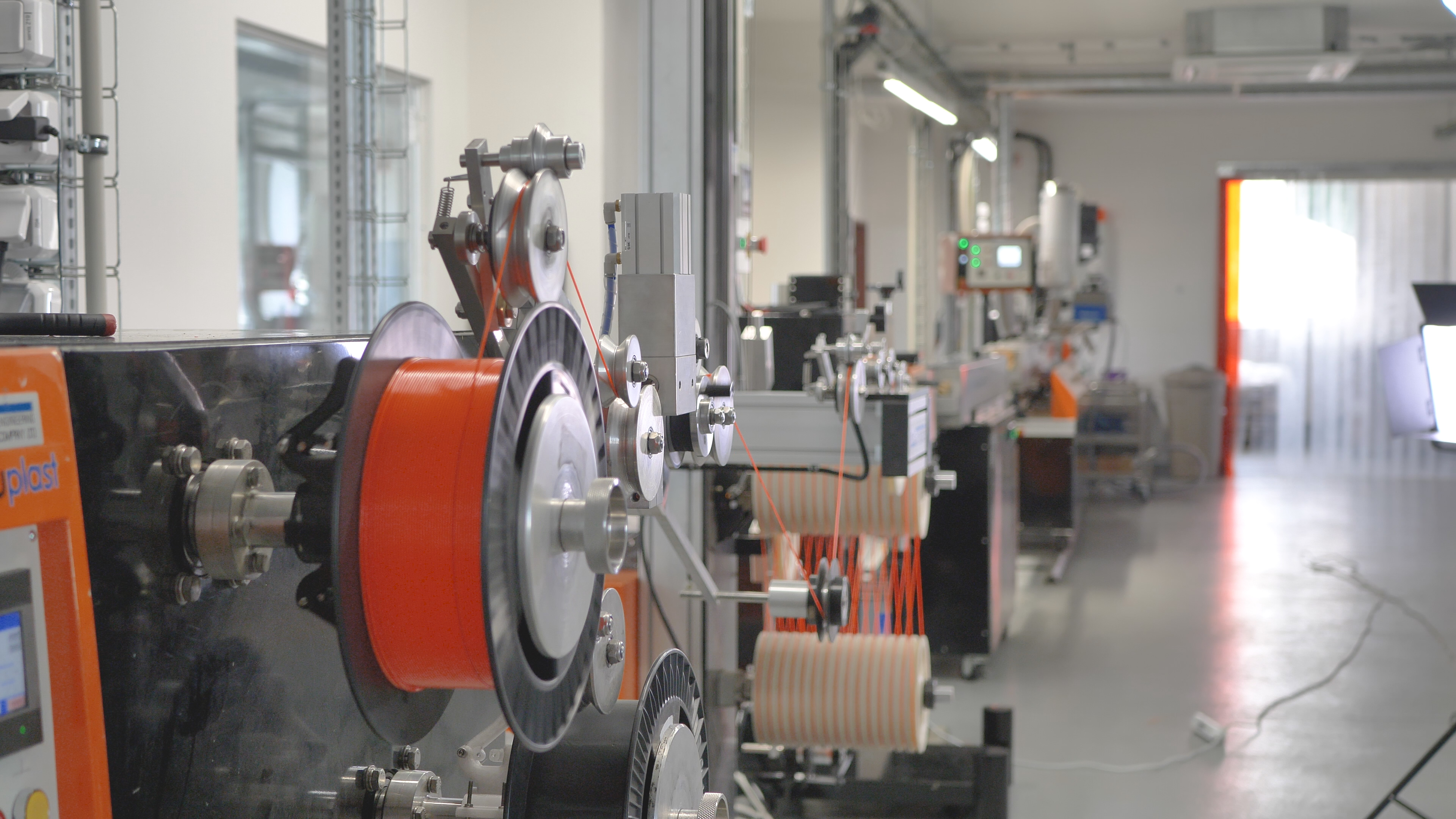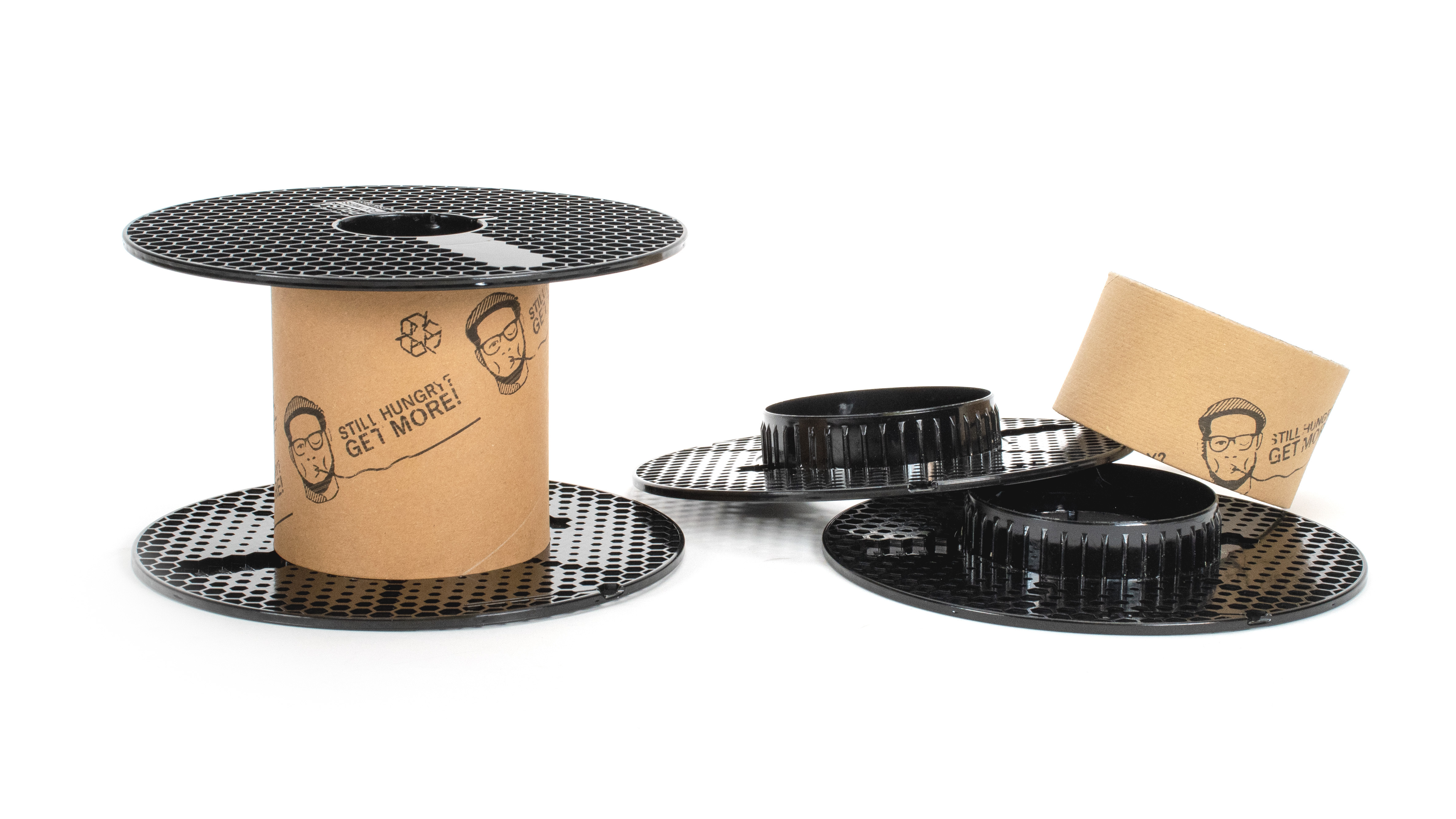What can you expect?
Prusament PLA Recycled is our own in-house made filament with ±0.05mm manufacturing tolerance. 100 % of the material consists of recycled Prusament PLA materials, so every batch has a different color. You can inspect the parameters of every spool we made at prusament.com. Check the sample spool!
 |
Made only from recycled Prusament PLAWaste produced during our in-house production of Prusament PLA is recycled and used as a base for Prusament PLA Recycled. There are no further additives or pigments in the mix. production. |
Smart spool design to save materialWe are constantly improving our filament spools. The latest iteration features a core from recycled cardboard and lightweight sides from recycled polycarbonate. |
 |
 |
Guaranteed ± 0.05 mm Manufacturing PrecisionEven our recycled PLA material is subjected to strict QA control, so you can be sure that your prints will go smoothly and without a hitch. t colors in their filaments. |
High Quality You Can Check YourselfWith every spool, you have the unique option to inspect its manufacturing parameters yourself. Scan a QR code on the spool to see all details online (check the sample spool). |
 |
About PLA
PLA melts at a relatively low temperature of about 175 degrees Celsius. Unlike so-called thermoset materials, PLA can be heated past its melting point multiple times with very little degradation. It’s a hard material, but that also means it’s somewhat brittle, and once it breaks, it likes to shatter. Only this material is proven for 50 microns layer height.
However, PLA is not a perfect material and, just like every other plastic, has some disadvantages. The low melting temperature also means low-temperature resistance. Parts start to lose mechanical strength at temperatures over 60 °C.
The combination of being low in UV and temperature resistance means that it’s not ideal for outdoor use. Also, PLA is only soluble in chemicals like chloroform or hot benzene. So when connecting multiple pieces, you’re better off using just glue.
Even though PLA is on its own food safe, we do not recommend repeatedly drinking or eating from your 3D prints. Because of the small fractures on the print surface, bacteria can build up in there over time. You can prevent this by applying a food-safe coating. When post-processing PLA, it’s better to use wet sanding. Without water, you'll quickly start heating the plastic by friction, which will cause it to soften and make it hard to keep sanding.
Printing Setup
| Nozzle | 215 °C |
| Heatbed | 50-60 °C |
| Positive Values | Negative Values |
| + Easy to print + Can print tiny parts + Can print huge objects + Hard and tough + Low warping + Made only from recycled Prusament PLA without further additives |
- Brittle - Low temperature resistance - Difficult post-processing - Every batch of Recycled PLA has a different color |
Notes
This rPLA is made in-house by Prusa Research.
1.75 mm filament is manufactured with precision of +- 0.05 mm
Before printing, make sure the surface of heatbed is clean as described in 3D Printing Handbook.
The 2kg spool won't fit the standard spoolholder, please download and print the 2kg spoolholder.
The recommended maximum temperatures for drying Prusament PLA are 50 °C for 4 - 8 hours.

